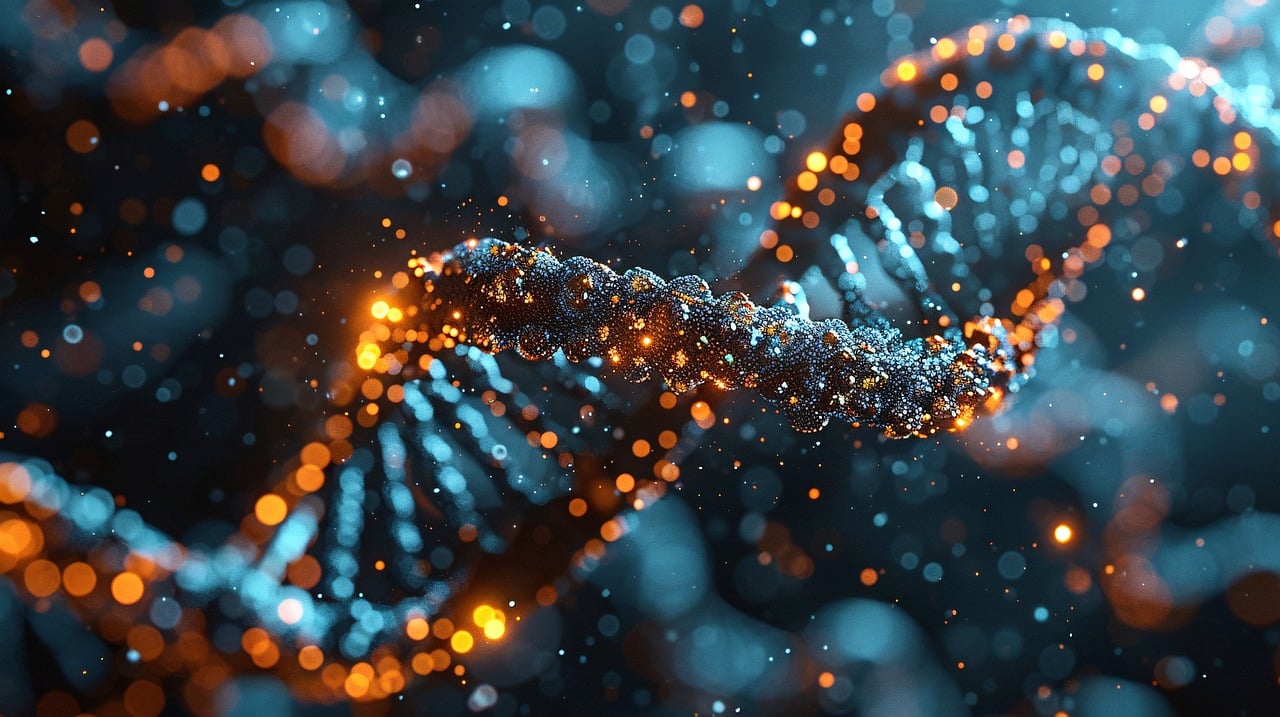New research challenges decades-old assumptions about the genetic code’s origins, uncovering evidence of extinct molecular languages that predate DNA as we know it.
Key Points at a Glance:
- Analysis of ancient protein domains reveals early life favored smaller amino acids, with sulfur-based compounds integrated earlier than thought.
- Sulfur-rich amino acids likely existed in primordial life, despite being absent from classic origin-of-life experiments like Urey-Miller.
- Over 100 protein families predating LUCA (Last Universal Common Ancestor) show affinity for aromatic ring structures, hinting at lost genetic codes.
- Findings suggest Earth’s universal genetic code replaced earlier, now-extinct systems optimized for different chemistries.
For over 70 years, the Urey-Miller experiment shaped our understanding of life’s origins, showing how lightning could spark amino acids from primordial soup. But new research from the University of Arizona reveals this foundational study missed a critical player: sulfur. By analyzing protein sequences dating back 4 billion years, scientists have uncovered evidence that early life relied on sulfur-based chemistry far earlier than previously believed—and that today’s genetic code may have erased molecular languages spoken by life’s earliest ancestors.
The study, published in PNAS, analyzed protein domains—evolutionary building blocks like molecular “wheels” reused across millennia—rather than full protein sequences. This approach allowed researchers to peer deeper into life’s history than ever before. “LUCA’s proteins show clear preferences,” says lead author Sawsan Wehbi. “Smaller amino acids dominated early, while complex ones like tryptophan arrived later. But the real surprise was sulfur.”
Sulfur’s Hidden Role in Life’s Dawn
While the 1952 Urey-Miller experiment produced amino acids without sulfur (as none was included), the new findings suggest sulfuric compounds were integral to early biochemistry. Ancient protein domains enriched in cysteine and methionine—sulfur-containing amino acids—indicate LUCA’s predecessors harnessed sulfur for stability and catalysis. This aligns with geological evidence of sulfur-rich environments on early Earth and has implications for astrobiology.
“Sulfur was likely as vital to early life as water,” says co-author Dante Lauretta. “On worlds like Enceladus or Europa, where sulfur compounds abound, this could redefine how we search for alien biochemistry.”
The Ghost Codes Before DNA
By comparing amino acid usage in LUCA-era proteins to younger sequences, the team identified a striking pattern: ancient domains favored aromatic amino acids (like tyrosine and tryptophan) with ring-shaped structures. These molecules were supposedly late additions to the genetic code, yet they appear disproportionately in life’s oldest molecular machinery.
“This mismatch suggests earlier genetic codes optimized for ringed amino acids existed,” explains senior author Joanna Masel. “Our code replaced them, but molecular ‘fossils’ remain in LUCA’s proteins.” These extinct codes may have been tailored to environments or chemistries lost to time.
Rewriting the Evolutionary Playbook
Key insights from the study include:
- Size Matters: Primordial life prioritized compact amino acids (e.g., glycine, alanine) for easier synthesis and folding.
- Metal Affinity: Amino acids that bind metals (like histidine) joined the code earlier than thought, aiding enzymatic functions.
- Domain Analysis: Focusing on protein domains—not whole proteins—revealed evolutionary patterns obscured in prior studies.
The findings challenge the “consensus order” of amino acid recruitment, which assumed larger, complex molecules emerged late. Instead, LUCA’s toolkit shows strategic diversity, blending simplicity with specialized functions.
Implications for Alien Life
The discovery of sulfur’s early role offers clues for detecting life beyond Earth. Sulfur-driven metabolisms might leave distinct biosignatures in icy moons or Martian soils. “If early Earth life thrived on sulfur,” says Lauretta, “similar chemistries could sustain organisms in Europa’s subsurface ocean.”
The Road Ahead
While the study doesn’t specify what extinct codes looked like, it opens avenues for synthetic biology. Researchers could engineer alternative genetic systems using amino acids favored by LUCA’s predecessors. “Nature experimented with multiple codes,” Masel notes. “We’re just beginning to decode its first drafts.”
